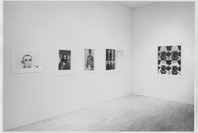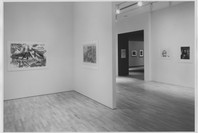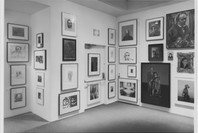Widely traveled and incessantly nomadic, Francesco Clemente divides his time between Rome, New York, and Madras, India. His work incorporates a broad range of cultural influences, including Eastern and Western religions, philosophy, art, mythology, and astrology, and his paintings, pastels, watercolors, and prints reflect this inclusive spirit. Tondo, for example, combines the circular format popular in the Italian Renaissance with a dreamlike composition of sensual nudes and mystical circular forms reminiscent of waxing and waning suns and moons.
Emerging on the New York art scene in the 1980s, Clemente was recognized as part of the new generation of figurative painters labeled Neo-Expressionists, and the peripatetic Italian painters known as the Transavanguardia. Clemente befriended members of New York's burgeoning graffiti and hip-hop scenes, as well as visual artists such as Andy Warhol, and musicians and literati. Such relationships have proven to be an important complement to Clemente's wholehearted embrace of collaboration, which has included work with Indian miniaturists and sign painters, monastic papermakers, authors and poets with whom he has made numerous book projects, and master printers with whom he makes prints.
In the 1980s one such collaboration with Japanese master printer Tadashi Toda of the Shi-un-do Print Shop in Kyoto led to the creation of several virtuoso woodcut self-portraits, one of Clemente's most prevalent subjects. Executed after existing watercolors, these woodcuts were done in the traditional ukiyo-e manner, with the artist collaborating with both a woodblock carver and a master printer to achieve complicated, full-color, multiblock prints. First invited to make prints by Kathan Brown of Crown Point Press in 1980, Clemente has created more than one hundred prints to date in mediums including woodcut, etching, and aquatint. In addition to Crown Point Press, he has also worked at Petersburg Press and Edition Schellmann, among others.
Publication excerpt from an essay by Sarah Suzuki, in Deborah Wye, Artists and Prints: Masterworks from The Museum of Modern Art, New York: The Museum of Modern Art, 2004, p. 229.


